
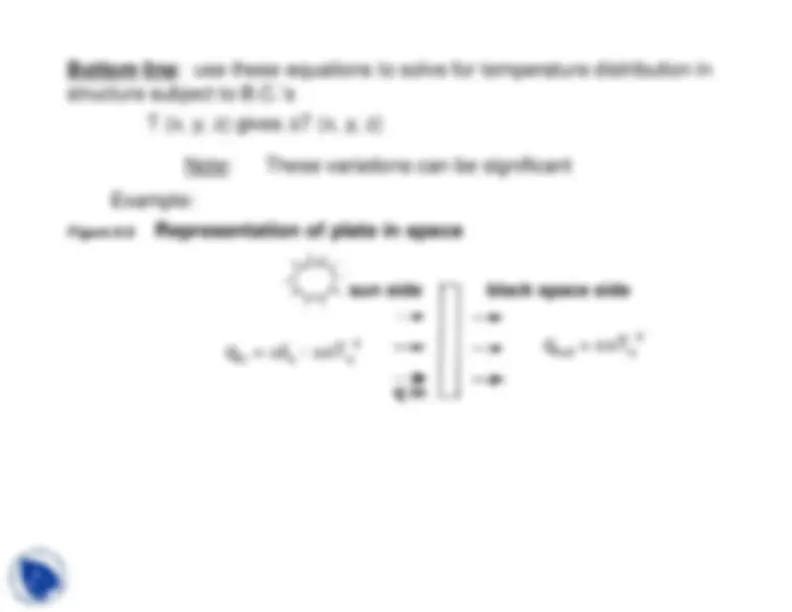
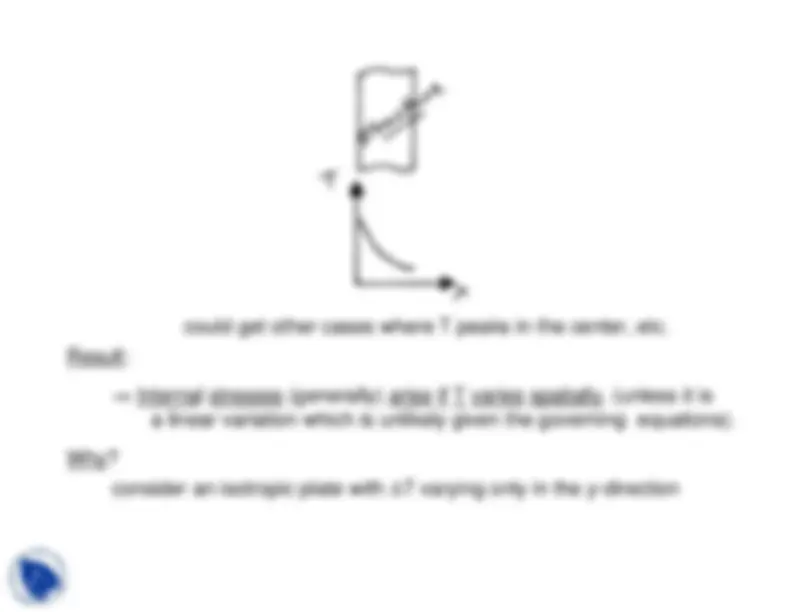
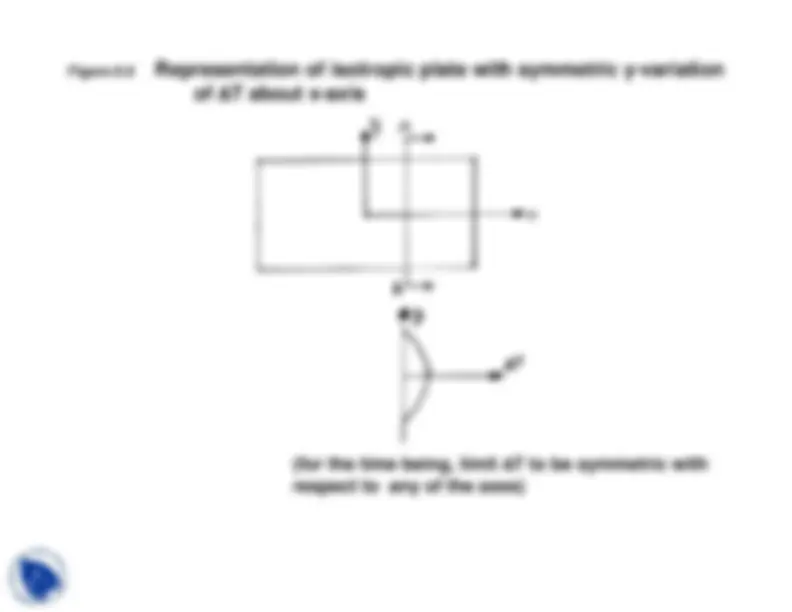

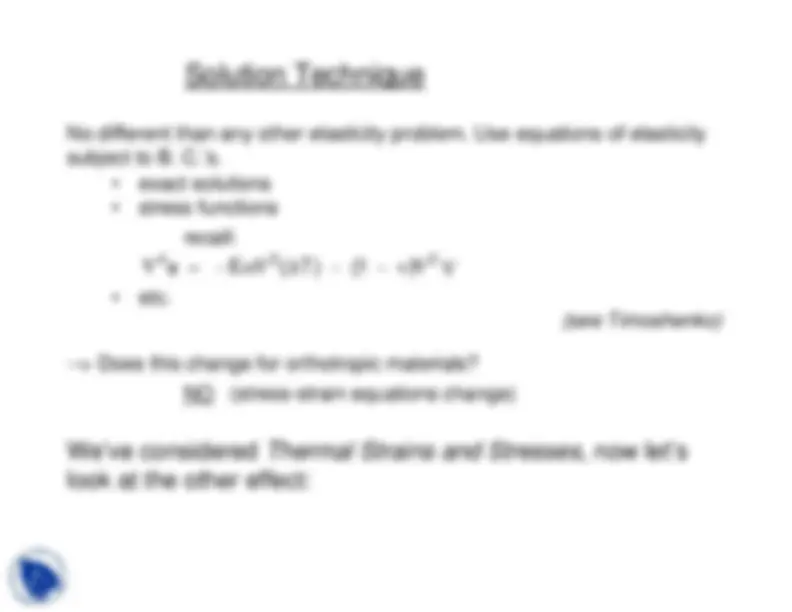
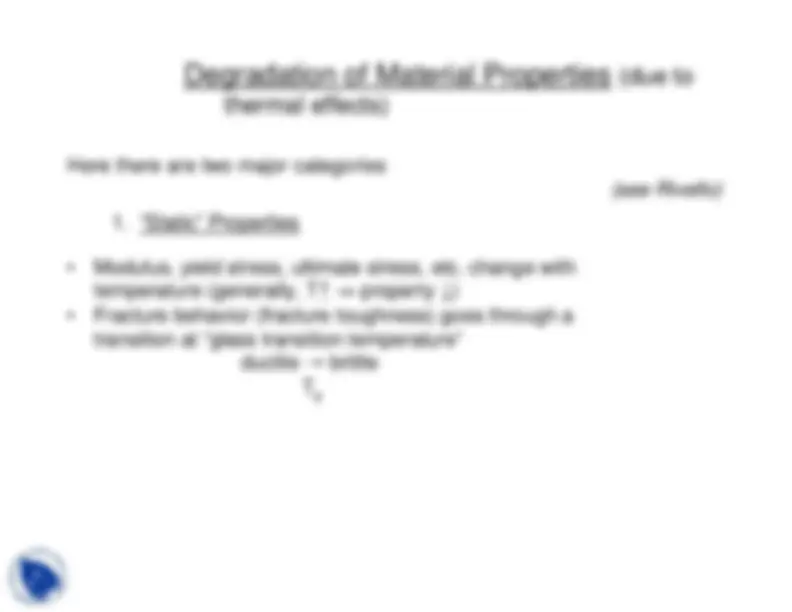
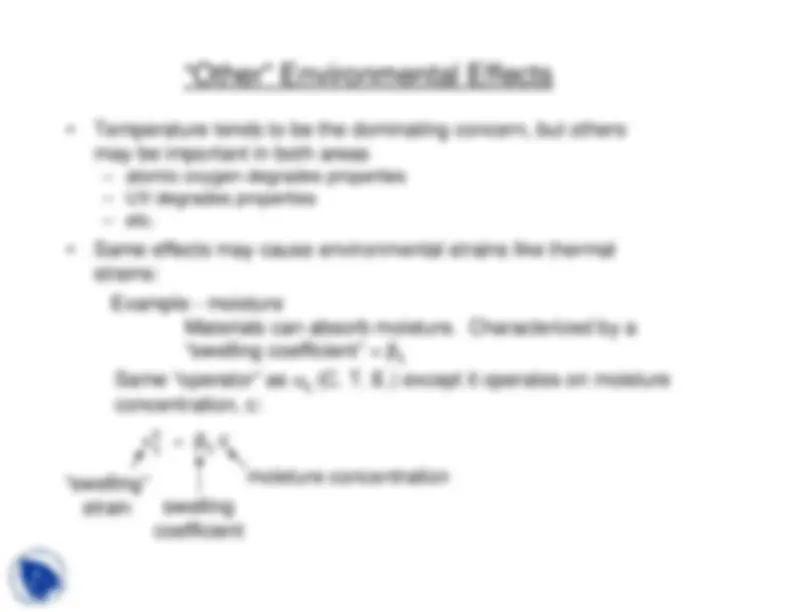
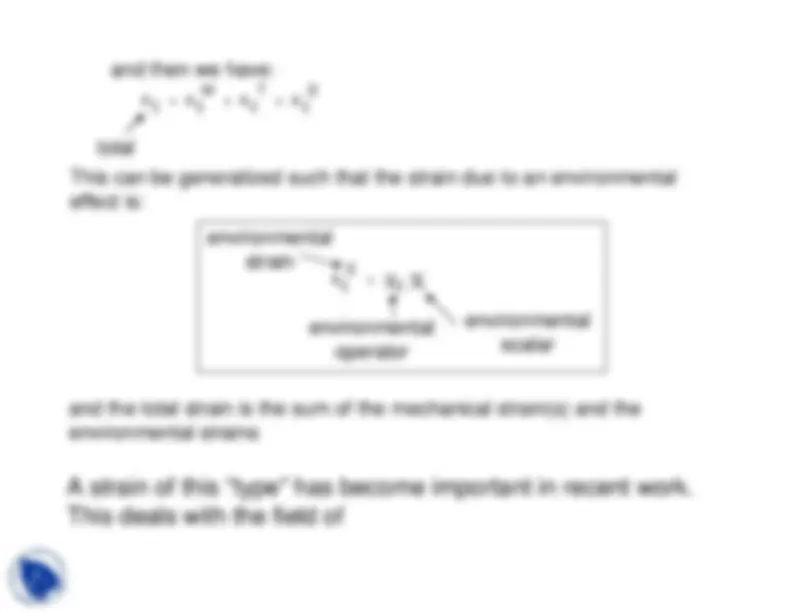
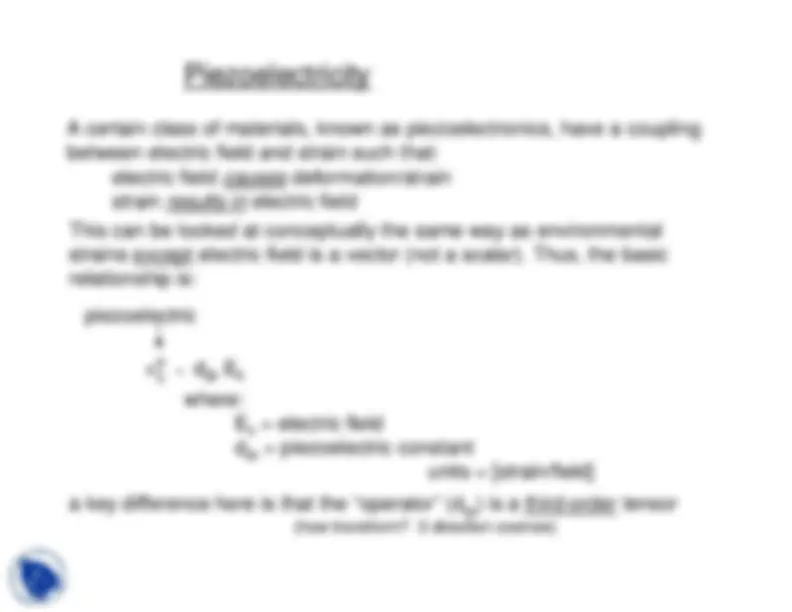
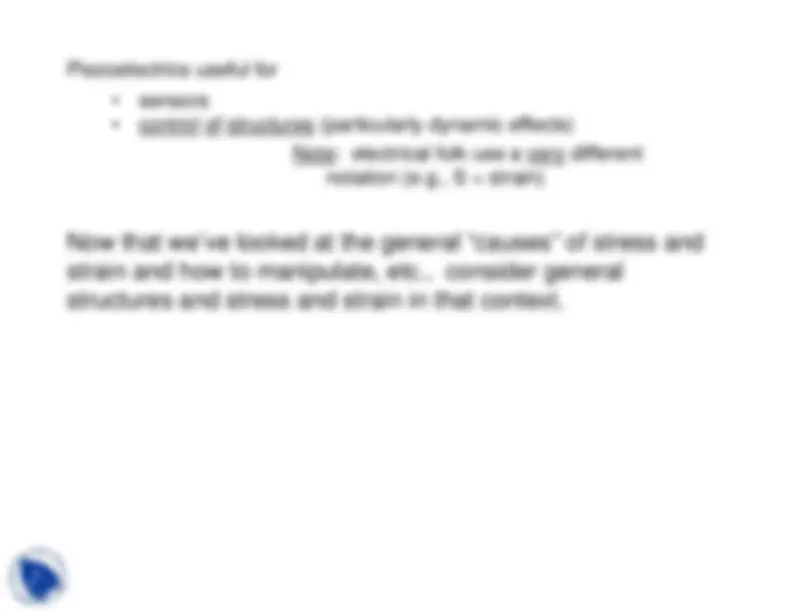


Study with the several resources on Docsity

Earn points by helping other students or get them with a premium plan


Prepare for your exams
Study with the several resources on Docsity

Earn points to download
Earn points by helping other students or get them with a premium plan
Community
Ask the community for help and clear up your study doubts
Discover the best universities in your country according to Docsity users
Free resources
Download our free guides on studying techniques, anxiety management strategies, and thesis advice from Docsity tutors
This lecture note is part of Material and Structures course. It was provided by Prof. Aparijita Singh at Andhra University. It includes: Temperature, Effects, Balance, Energy, Heat, Flux, Density, Specific, heat, Capacity, Fourier, Equation, Conductivity, Diffusivity, Distribution, Internal, Stress
Typology: Exercises
1 / 18

This page cannot be seen from the preview
Don't miss anything!











Do a balance of energy:
T
q z T
q^ z T
q z
dz
ρ C
heat flux
heat flux
change in stored
on side 1
on side 2
heat in strip
where:
ρ
= density
t = time C = specific heat capacity
this becomes:
T
− (^) ∂ q z = ρ C ∂ T
z
t
Recalling that:
T
q z
(^) k T
z
we have:
k z T
∂ T ^
ρ C
z
z (^)
If k
z T and
ρ c are constant with respect to z (for one material they are),
then we get:
k T ∂ 2 T ∂ T z
=
ρ C ∂ z 2 ∂ t
Fourier
s equation
We call:
k z T
thermal diffusivity
ρ C
More generally, for 3-D variation:
k T
∂ T
ρ
∂ x x ∂ x
y
(^) k y
y ^
z
k z
z (^)
thermal conductivities in x, y, and z directions
could get other cases where T peaks in the center, etc.
Result
Interna
l stresses
(generally)
arise if T varies spatially
. (unless it is
a linear variation which is unlikely given the governing equations).
Why
consider an isotropic plate with
T varying only in the y-direction
∆∆∆
Figure 9.
Representation of isotropic plate with symmetric y-variation
of
T about x-axis
(for the time being, limit
∆ T to be symmetric with
respect to any of the axes)
locally
two elements side by side In order to attain this deformation, stresses must arise. Consider
Undeformed
Deformed
greater
piecestresses present to compress the top piece and elongate the bottom These two must deform the same longitudinally, so there must be
Thus:
ε x =
ε x (x)
ε y =
ε y (y)
This
physical
argument shows we have thermal strains, mechanical
strains and stresses.
self-equilibrating
a
− a
σ y dx
b
− b
σ x dy
Causes
Here there are two major categories
Static
Properties
temperature (generally, TModulus, yield stress, ultimate stress, etc. change with
property
transition at “glass transition temperature”Fracture behavior (fracture toughness) goes through a
ductile
brittle
g
(see Rivello)
Figure 9.
Representation of variation of ultimate stress with
temperature
Figure 9.
Representation of change in stress-strain behavior with
temperature
ductile as T increases)
(generally, behavior is more
--> Thus, must use properties at appropriate temperature in analysis
MIL-HDBK-5 has much data
may be important in both areasTemperature tends to be the dominating concern, but others
atomic oxygen degrades properties
UV degrades properties
etc.
strains:Same effects may cause environmental strains like thermal
Example - moisture
“swelling coefficient” =Materials can absorb moisture. Characterized by a
β ij
Same “operator” as
α ij (C. T. E.) except it operates on moisture
concentration, c:
s
ε ij
=
β ij c
“swelling”
moisture concentration
strain
swelling
coefficient
and then we have:
ε ij
=
ε ij M
ε ij T
ε ij S
total
effect is: This can be generalized such that the strain due to an environmental
environmental
strain
E
ε ij
=
χ ij X
environmental
environmental
operator
scalar
This deals with the field of A strain of this “type” has become important in recent work.environmental strains and the total strain is the sum of the mechanical strain(s) and the
(consider the case with only mechanical and piezoelectric strain)And we add this strain to the others to get the total strain
ε ij
=
ε ij M
ε ij p
Again, only the mechanical strain is related
directly
to the stress:
ε ij
=
S ijmn
σ mn
d ijk
E k
inverting gives:
σ ij
=
ijmn
ε mn
−
E ijmn
d mnk
k
(watch the switching of indices!)
thus we have “piezoelectric-induced” stresses of:
ijmn
d mnk
k
Again, equilibrium if the piezoelectric expansion is physically resisted.
( ∫ (^) σ
=
F)
must
be satisfied.
But
, unlike environmental cases, the electric field is not just an external
equation:parameter from some uncoupled equation of state but there is a coupled
i
=
e ik
E k
d inm
σ mn
dielectric constant from previous equationnote switch in indices since this is transpose of
where:
e ik = dielectric constant
i = electrical charge
is assumed. That is, E --> “Normally”, when piezoelectric materials are utilized, “E-field control”
k is the independent variable and the electrical
when charge constraints are imposed the simultaneous set of equations:charge is allowed to “float” and take on whatever value results. But,
σ mn
mnij
ε ij
−
E mnij
d ijk
E k
e ik
E k
d inm
σ mn
(mechanical, etc.) must be solved. This is coupled with any other sources of strain